Did you know that the Laguna Copperplate Inscription, dating back to 900 A.D., reveals an advanced understanding of timekeeping in ancient Filipino society? This artifact, among others, highlights how early Filipinos measured existence through events and natural cycles.
In ancient Filipino culture, time was not just a linear concept but deeply tied to nature and community. Unlike modern calendars, their systems were influenced by agricultural cycles, lunar phases, and significant events. This approach reflects a unique blend of practicality and spirituality.
Globally, many ancient civilizations shared similar methods, but the Filipino perspective stands out for its integration of cultural beliefs. The transition from traditional to modern timekeeping was gradual, shaped by external influences and internal innovations.
Understanding these ancient concepts offers a fascinating glimpse into how Filipinos viewed their world. It also underscores the importance of preserving these historical insights for future generations.
Key Takeaways
- The Laguna Copperplate Inscription shows early Filipino timekeeping knowledge.
- Ancient Filipinos linked time to nature and community events.
- Their calendar systems were influenced by lunar phases and agriculture.
- Filipino timekeeping methods blended practicality with spirituality.
- The transition to modern methods was shaped by cultural and external factors.
: Introduction to Ancient Filipino Time Concepts
Ancient Filipinos viewed existence through a lens deeply connected to nature and community. Their understanding of time was not just about counting hours or days. It was a way to see the world through events, seasons, and cultural practices.
In pre-colonial Philippines, time was measured by natural cycles like the moon’s phases and agricultural seasons. This approach reflected a practical yet spiritual connection to their environment. Unlike modern calendars, their systems were fluid and tied to daily life.

Definition and Scope
Ancient Filipino time concepts were rooted in observation and tradition. They used lunar cycles to mark months and agricultural events to define seasons. This method allowed them to adapt to their environment effectively.
Time was also a cultural element. Festivals, rituals, and community gatherings were scheduled based on these natural markers. This integration of time and culture highlights its significance in their daily lives.
Compared to other ancient civilizations, Filipino timekeeping was unique. While Egyptians relied on solar calendars and Mayans used complex astronomical systems, Filipinos focused on practicality and community needs.
The concept of change was central to their understanding of time. Seasons shifted, crops grew, and communities evolved. This fluidity shaped their worldview and cultural narratives.
| Civilization | Timekeeping Method | Key Influence |
|---|---|---|
| Ancient Filipinos | Lunar and agricultural cycles | Nature and community |
| Ancient Egyptians | Solar calendar | Astronomy |
| Mayans | Astronomical systems | Mathematics |
Understanding these concepts offers a glimpse into how ancient Filipinos perceived their world. It also underscores the importance of preserving these insights for future generations.
: Historical Evolution of Timekeeping in the Philippines
Archaeological findings shed light on how ancient Filipinos tracked the passage of days and seasons. Their methods were deeply tied to natural cycles and cultural practices, offering a unique perspective on the process of timekeeping.
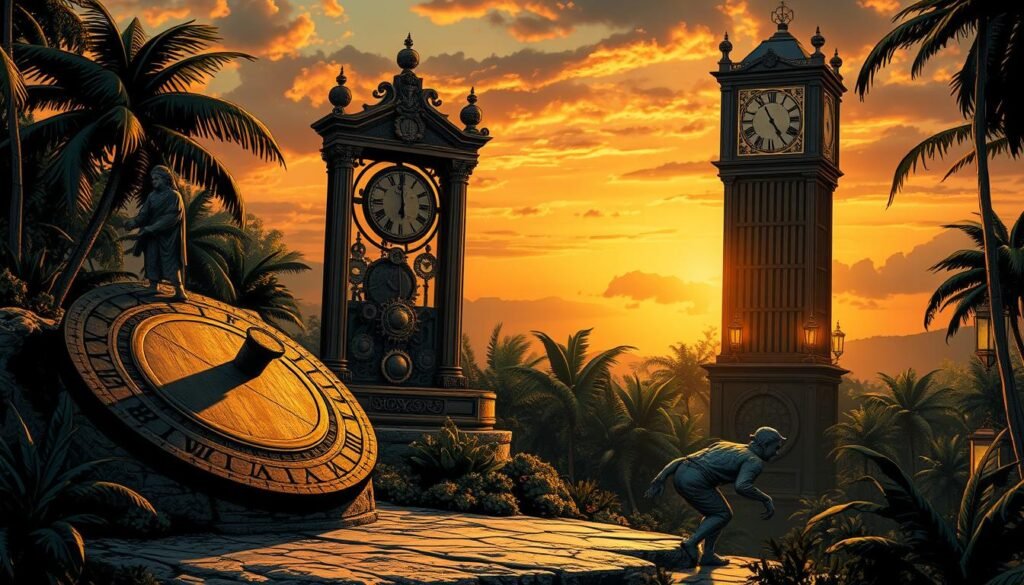
Archaeological Discoveries
Excavations across the Philippines have uncovered artifacts that reveal early methods of tracking time. For example, the Laguna Copperplate Inscription provides evidence of a sophisticated system rooted in lunar cycles. These discoveries highlight the way ancient Filipinos integrated natural phenomena into their daily lives.
Other findings include tools and inscriptions that show how they marked significant events, such as harvests and festivals. These artifacts demonstrate their reliance on observation and ritual to measure the passage of a year.
Traditional Chronological Systems
Ancient Filipino societies used lunar and solar observations to create their calendars. The lunar cycle was central to their system, with each phase marking a new month. This method was practical for agricultural planning and cultural events.
Over time, these systems evolved to include more complex observations. The process of refinement was influenced by both internal innovations and external cultural exchanges. For instance, neighboring civilizations like the Malays and Chinese introduced new ideas that enriched Filipino timekeeping.
| Civilization | Timekeeping Method | Key Influence |
|---|---|---|
| Ancient Filipinos | Lunar and solar cycles | Nature and rituals |
| Ancient Malays | Lunar calendar | Trade and migration |
| Ancient Chinese | Solar and lunar calendar | Cultural exchange |
This evolution reflects the adaptability and ingenuity of ancient Filipino societies. Their systems were not just tools for tracking time but also expressions of their connection to the natural world and community.
: Significance of Calendars in Filipino Culture
Calendars have always played a vital role in shaping Filipino culture and traditions. They were not just tools for tracking days but also frameworks for social and religious life. Ancient Filipinos relied on both lunar and solar calendars to guide their activities, from farming to festivals.
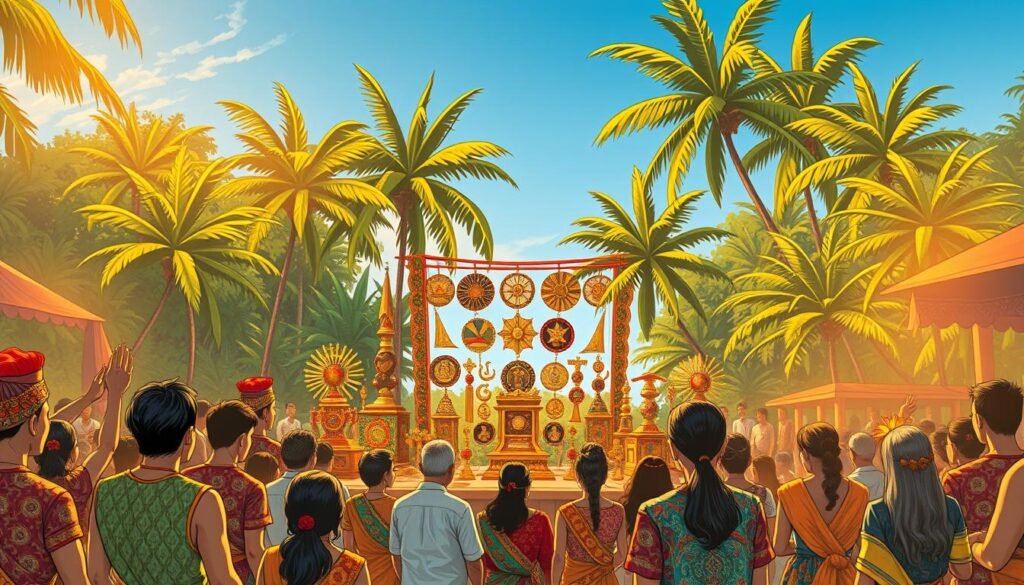
Lunar and Solar Calendar Traditions
The lunar calendar was central to Filipino life. It marked months based on the moon’s phases, aligning with agricultural cycles. For example, planting and harvesting were scheduled around these lunar observations. This system ensured that communities worked in harmony with nature.
In contrast, the solar calendar tracked the sun’s movement, defining seasons and longer periods. Together, these calendars created a balanced approach to timekeeping. They allowed Filipinos to plan not just daily tasks but also significant cultural events.
Astronomical observations were key to measuring hours and days. Ancient Filipinos used the position of the sun and stars to determine the best times for activities. This method was practical and deeply rooted in their connection to the natural world.
Indigenous calendar systems evolved over time. For instance, the Ifugao tribes used a 13-month lunar calendar, with each month represented by 28 knots on a string. This line of tradition highlights their ingenuity and adaptability.
| Calendar Type | Key Feature | Cultural Impact |
|---|---|---|
| Lunar Calendar | Based on moon phases | Guided agricultural activities |
| Solar Calendar | Tracked sun’s movement | Defined seasons and festivals |
Cultural rituals were deeply tied to these calendar systems. Festivals like the harvest celebration and religious observances were scheduled based on lunar and solar cycles. These events strengthened community bonds and preserved cultural heritage.
The evolution of calendar systems reflects the resilience of Filipino traditions. From simple observations to formalized timekeeping, these systems have shaped the way Filipinos understand their world. Today, they remain a testament to the rich cultural history of the Philippines.
: Understanding Time Through Ancient Artifacts
From water clocks to lunar markers, the Philippines showcases a rich history of timekeeping tools. These artifacts reveal how early societies measured existence, blending practicality with cultural significance. Each device tells a story of innovation and connection to the natural world.
Timekeeping Devices and Tools
Archaeological sites across the country have uncovered tools like water clocks and sundials. These devices were used to mark periods and seasonal cycles, ensuring communities stayed in sync with nature. For example, water clocks measured hours by the flow of liquid, while sundials tracked the sun’s movement.
Symbols and words inscribed on these artifacts often denoted specific events or rituals. These markings provide insights into how ancient Filipinos understood the passage of days. They also reflect the broader cultural and technological practices of the country.
The craftsmanship behind these tools is remarkable. Artisans used locally available materials to create functional yet artistic devices. Their designs often incorporated elements of nature, such as stars and waves, highlighting their deep connection to the environment.
These ancient timekeepers influenced later generations. Modern Filipino practices, like lunar-based festivals, trace their roots to these early systems. They also bridge the gap between myth and measurable time, showing how stories and science intertwined in ancient societies.
Understanding these artifacts offers a glimpse into the ingenuity of early Filipinos. Their tools were not just practical but also deeply symbolic, reflecting a worldview that valued harmony with nature and community.
: The Concept of Time in Filipino Mythology and Religion
In Filipino mythology, the passage of existence was deeply intertwined with natural and spiritual cycles. Unlike modern linear views, ancient Filipinos saw life as a series of recurring patterns, influenced by deities and the environment. This cyclical perspective shaped their rituals, festivals, and daily lives.
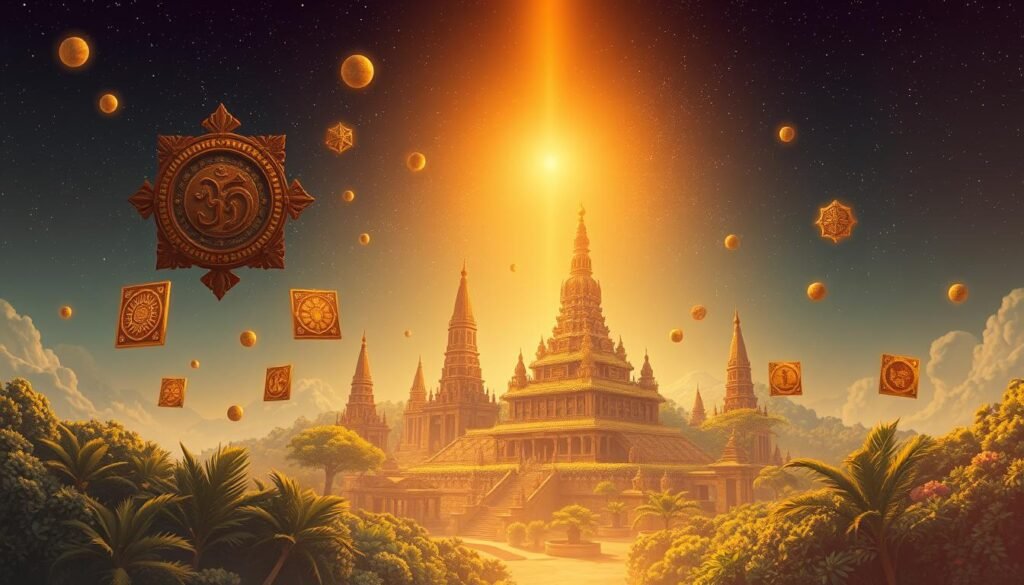
Cyclical Views and Indigenous Beliefs
Ancient Filipino myths often depicted time as a loop, where events repeated in harmony with nature. For example, the moon’s phases marked the rhythm of agricultural activities, while the sun’s movement defined seasons. This cyclical view was central to their understanding of existence.
Deities like Mayari, the moon goddess, and Liadlao, the sun god, personified natural elements tied to time. These figures were revered in rituals that aligned with lunar and solar cycles. Such practices ensured harmony between the community and the cosmos.
Daylight played a crucial role in mythological frameworks. It symbolized life, growth, and divine favor. Many rituals were performed at specific times of the day, often during sunrise or sunset, to honor these beliefs.
Personal narratives in indigenous lore often emphasized fate and the passage of existence. Stories like the transformation of Lisuga into stars reflected the idea that every person had a destined role in the universe. These tales reinforced the cyclical nature of life and death.
| Mythological Element | Role in Timekeeping | Cultural Significance |
|---|---|---|
| Mayari (Moon Goddess) | Marked lunar cycles | Guided agricultural rituals |
| Liadlao (Sun God) | Defined seasons | Symbolized life and growth |
| Lisuga (Stars) | Represented fate | Highlighted personal destiny |
Festivals like the Obando Fertility Rites were timed according to these beliefs. Originally dedicated to the deity Lakapati, these rituals celebrated the cyclical renewal of life. Such events remain a testament to the enduring influence of ancient beliefs on modern culture.
Comparing mythological narratives with scientific principles reveals fascinating parallels. While myths attribute celestial phenomena to divine actions, science explains them through natural laws. Both perspectives, however, emphasize the importance of understanding the universe.
These ancient beliefs continue to shape Filipino cultural identity. They remind us of the deep connection between humanity, nature, and the cosmos. By preserving these traditions, Filipinos honor their rich heritage and unique worldview.
: Measurement and Standards: From Water Clocks to Modern Systems
The journey of measuring existence has evolved from simple water clocks to the precision of atomic clocks. This progression reflects humanity’s quest for accuracy and the profound impact of technological advancements on society.
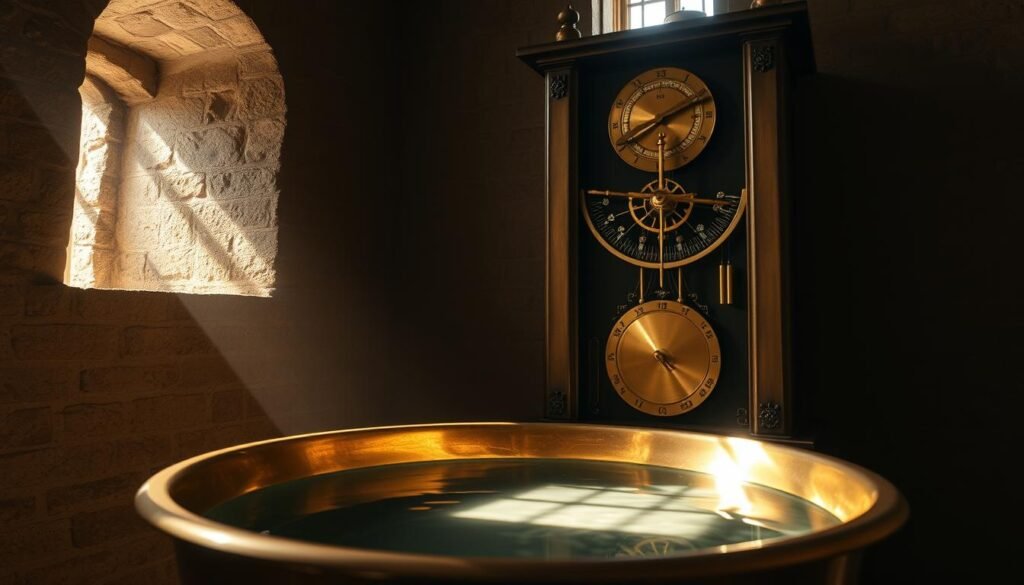
Ancient Chronometry Techniques
Water clocks, or clepsydras, were among the earliest devices used to track the passage of hours. Dating back to ancient Egypt around 1417–1379 BC, these clocks relied on the steady flow of water to mark intervals. The Babylonians refined this technology, using it for astronomical calculations and defining night watches based on water weight.
In China, water clocks evolved into sophisticated systems by 200 BC, featuring indicator rods and mercury to prevent freezing. The Persian pengan, used for irrigation management, remained in use until 1965, showcasing the enduring legacy of ancient timekeeping.
Influence of Modern Time Standards
The invention of mechanical clocks in 14th-century Europe marked a turning point in the history of time measurement. Pendulum clocks, introduced in 1656, significantly improved accuracy, while the 20th century brought quartz and atomic clocks, redefining precision.
Modern standards like ISO 8601 and the use of atomic clocks have standardized global timekeeping. These advancements have shaped daily life, from scheduling to navigation, demonstrating the interplay between tradition and innovation.
From ancient water clocks to atomic precision, the state of time measurement reflects humanity’s relentless pursuit of accuracy and its profound impact on society.
: Time in Filipino Language and Folklore
Language and folklore offer a window into how Filipinos have historically perceived the passage of existence. From proverbs to traditional songs, the Filipino language beautifully encapsulates the essence of existence and its cycles. These expressions reveal a deep connection between cultural narratives and the rhythms of nature.
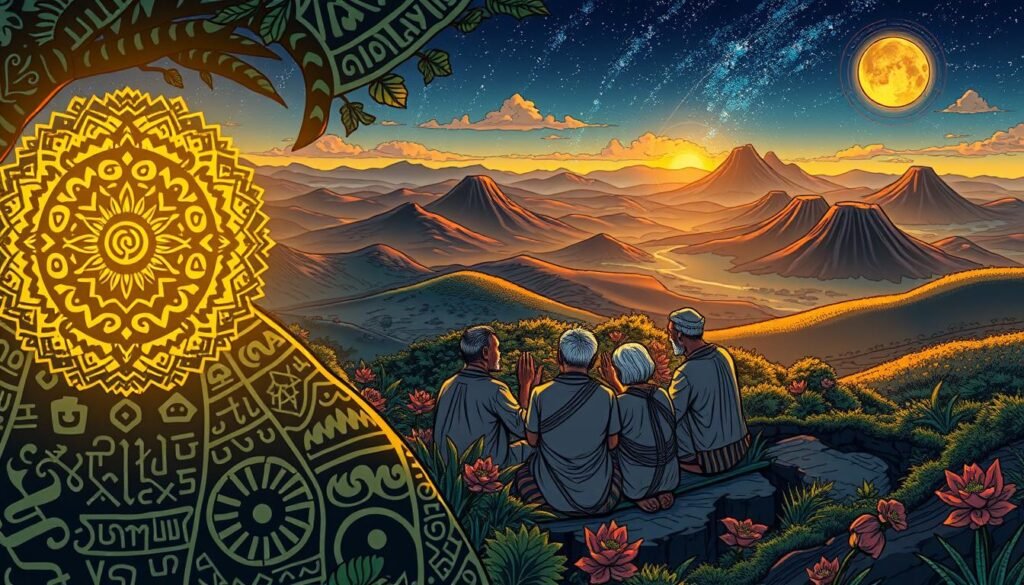
Linguistic Expressions and Cultural Narratives
Filipino language is rich with terms that denote specific periods of the day. Words like umaga (morning), tanghali (noon), and gabi (evening) are deeply rooted in daily life. These terms reflect the practical and spiritual ways Filipinos have marked the passage of days.
Cultural narratives often embed existence as a key element. For example, the proverb
“Daig ng maagap ang masipag”
emphasizes punctuality over talent. Such expressions highlight the cultural value placed on managing existence effectively.
Modern concepts like daylight saving time contrast sharply with traditional Filipino expressions. While daylight saving adjusts clocks for efficiency, Filipino folklore and language focus on natural cycles. This difference underscores the unique cultural perspective on existence.
Folklore and songs also preserve historical timekeeping methods. Traditional tunes often reference the moon and stars, linking existence to celestial events. These narratives serve as a bridge between ancient practices and modern understanding.
The evolution of time-related words reflects societal changes. For instance, the Spanish-derived word oras (hour) replaced older indigenous terms. This shift illustrates the influence of external cultures on Filipino language and timekeeping.
In essence, the Filipino language and folklore provide a rich tapestry of expressions and stories that illuminate how existence has been understood and valued throughout history.
: Bridging Scientific Understandings with Cultural Time
The way we understand existence has evolved dramatically, blending science and tradition. While modern physics defines existence with precision, cultural narratives often imbue it with symbolic meaning. This section explores the fascinating contrasts and connections between these two perspectives.
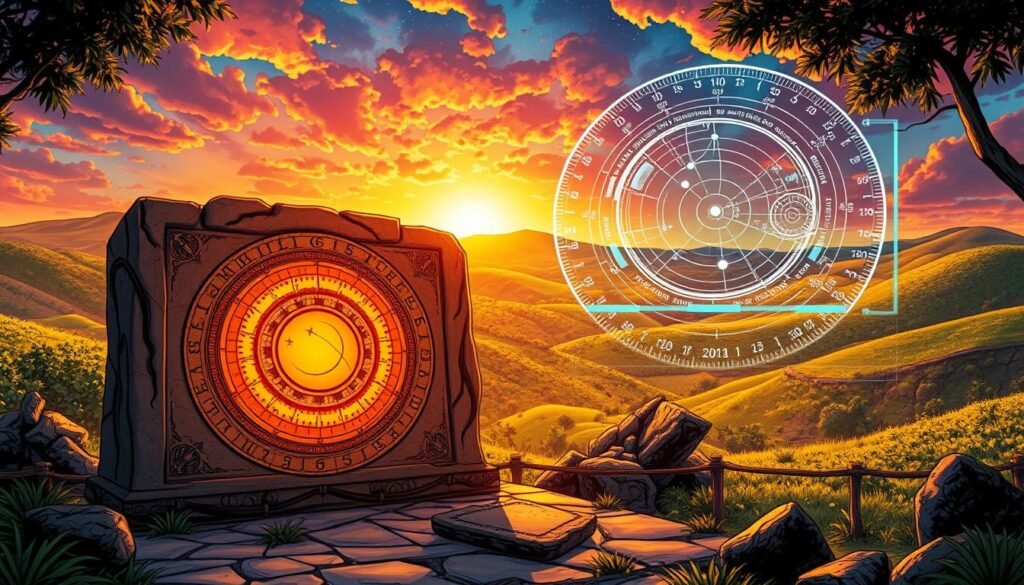
Comparing Scientific and Folk Perspectives
In physics, existence is often measured through the concept of standard time, a universal framework based on atomic clocks. This method ensures accuracy and consistency across the globe. In contrast, cultural narratives, like those in Filipino folklore, view existence as a cyclical process tied to nature and community.
For example, the space-time continuum in general relativity describes existence as a fabric woven by gravity and motion. This scientific view contrasts with traditional Filipino beliefs, where existence is marked by lunar phases and agricultural cycles. Both perspectives, however, emphasize the importance of understanding our place in the universe.
Modern advancements, like the precision of atomic clocks, highlight humanity’s quest for accuracy. Yet, cultural practices, such as lunar-based festivals, remind us of the symbolic significance of existence. These examples show how science and tradition can coexist, offering complementary insights.
The relationship between empirical evidence and cultural memory continues to evolve. As we embrace new technologies, we also preserve ancient wisdom, ensuring a balanced understanding of existence. This integration enriches our global perspective, bridging the gap between science and culture.
: Time in Filipino Daily Life and Social Practices
In the Philippines, the rhythm of daily life is deeply tied to cultural traditions and natural cycles. From morning routines to community gatherings, the concept of time plays a central role in shaping social practices. This connection reflects a blend of ancient customs and modern adaptations, creating a unique way of life.
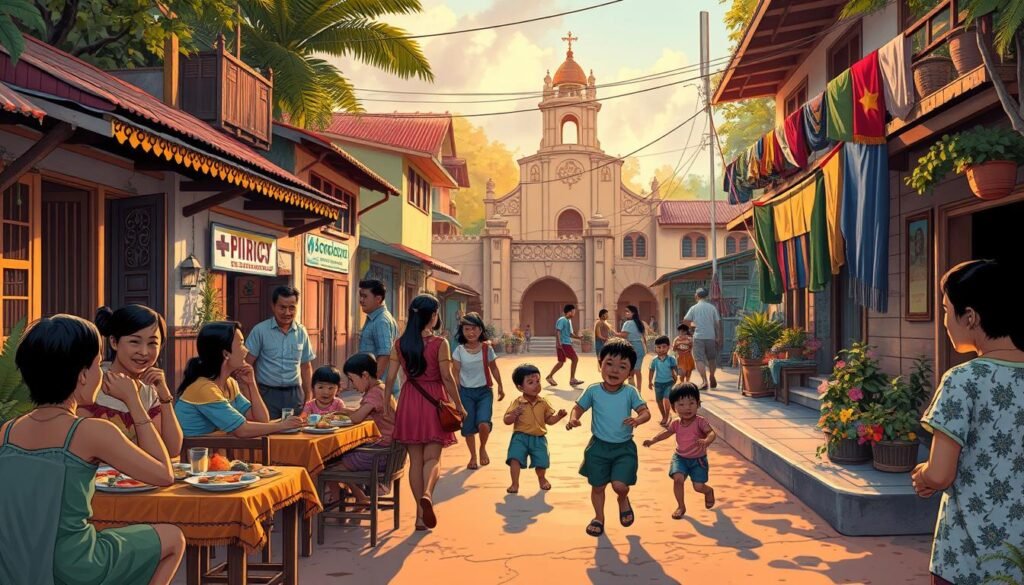
Rituals, Festivals, and Routine Events
Filipino festivals, like the Sinulog and Pahiyas, are scheduled based on lunar and agricultural cycles. These events bring communities together, celebrating shared heritage and values. Rituals, such as the Pagdiwata harvest ceremony, are timed to align with natural phenomena, ensuring harmony with the environment.
Daily routines also reflect ancient timekeeping practices. For example, farmers still plant and harvest crops according to traditional lunar calendars. This approach not only ensures productivity but also preserves cultural knowledge passed down through generations.
In modern society, saving time has become a priority. Filipinos balance traditional practices with efficient schedules, adapting to the demands of contemporary life. This blend of old and new highlights the resilience and adaptability of Filipino culture.
Cultural questions about the timing of events are often addressed through community consensus. Elders and leaders play a key role in deciding the best dates for ceremonies, ensuring they align with both tradition and practicality.
Traditional ceremonies, like the Kalinga Bodong peace pact, are tied to specific periods of the year. These events strengthen social bonds and reinforce cultural identity. They also demonstrate how time continues to organize and enrich Filipino social life.
From ancient rituals to modern routines, the concept of time remains a vital part of Filipino daily life. This continuity bridges the past and present, offering a glimpse into the enduring legacy of cultural traditions. For more insights into Filipino cultural practices, visit Britannica.
: Event, Change, and the Passage of Centuries in Philippine History
The Philippines has witnessed centuries of transformation, marked by pivotal events that shaped its identity. From ancient migrations to colonial conquests, the past serves as a foundation for understanding the nation’s journey. These milestones not only reflect historical change but also influence ideas about the future.

Historic Milestones Marked by Time
Philippine history is a tapestry of significant events, each tied to specific periods. For example, the arrival of Austronesian migrants around 3000 BCE laid the groundwork for early societies. By 1000 BCE, the archipelago was home to diverse communities, from tribal groups to harbor principalities.
The century-long influence of Indian and Islamic cultures further enriched Filipino traditions. The Majapahit empire introduced Hindu-Buddhist elements, while the establishment of a mosque in Jolo in 1380 marked the spread of Islam. These cultural exchanges highlight the adaptability of Filipino society.
Spanish colonization in 1565 brought profound changes, lasting over 333 years. Miguel Lopez de Legazpi’s conquest of Manila marked the beginning of a new era, characterized by trade, religion, and governance. The Spanish introduced the Gregorian calendar, altering traditional timekeeping practices.
In the 19th century, the Philippine Revolution against Spanish rule became a turning point. Leaders like José Rizal and Andres Bonifacio inspired a movement for independence, culminating in the declaration of the First Philippine Republic in 1898. These events underscore the resilience of the Filipino spirit.
Recording Time for Cultural Identity
Recording historical events has been vital for preserving cultural and national identity. Ancient Filipinos used lunar and agricultural cycles to mark significant periods. This practice evolved with the introduction of foreign calendars, blending tradition with modernity.
Today, the past continues to shape the future. Festivals like Sinulog and Pahiyas celebrate historical and cultural milestones, ensuring their legacy endures. By understanding these events, Filipinos can navigate the challenges of the present and envision a brighter future.
The interplay between historical change and symbolic time remains a cornerstone of Filipino identity. From ancient rituals to modern commemorations, the passage of centuries reflects the nation’s enduring spirit and cultural richness.
: Impact of Foreign Calendrical Systems on the Philippines
The Philippines’ calendar systems underwent significant transformations during colonial periods. Spanish and American influences introduced new ways of measuring time, reshaping traditional practices. These changes not only altered daily life but also had lasting cultural and administrative effects.
Spanish and American Influences
Spanish colonization in 1565 brought the Gregorian calendar to the Philippines. This system replaced indigenous lunar and agricultural cycles, aligning the archipelago with European standards. The transition was not without issue, as local communities struggled to adapt to the new framework.
American occupation in 1898 further modernized timekeeping. The introduction of standardized clocks and schedules reflected the global trend of industrialization. However, these changes often clashed with traditional practices, creating tension between old and new ways of life.
The integration of foreign calendars also had broader implications. On an earth-wide scale, the Philippines became part of a global timekeeping network. This shift facilitated trade and communication but also marginalized local traditions.
Despite these challenges, the blending of historical and international timelines enriched Filipino culture. Today, the legacy of these changes is evident in festivals, rituals, and daily routines. For more insights into the role of calendars in organizing human understanding, visit this resource.
: The Role of Time in Shaping Filipino Identity
The Filipino identity has been profoundly shaped by the concept of time, blending ancient traditions with modern interpretations. From the lunar calendars of pre-colonial societies to the precise number of minutes tracked by atomic clocks, time has been a constant thread weaving through the nation’s history.
Legacy and Modern Interpretations
Ancient Filipino timekeeping systems, rooted in nature and community, continue to influence contemporary culture. Festivals like Sinulog and Pahiyas are still celebrated based on lunar and agricultural cycles. These events serve as a bridge between the past and present, preserving cultural heritage while adapting to modern life.
Every minute of history contributes to the Filipino identity. The Spanish introduction of the Gregorian calendar and the American standardization of clocks brought significant changes. Yet, traditional practices persist, creating a unique blend of old and new.
Modern timekeeping emphasizes precision, but the philosophical concept of time remains deeply ingrained in Filipino culture. This duality reflects the nation’s ability to honor its roots while embracing progress.
From ancient rituals to contemporary routines, time continues to shape the Filipino way of life. It is a testament to the enduring legacy of a culture that values both tradition and innovation.
: Exploring “Time” in the Filipino Paradigm
The Filipino understanding of existence is deeply rooted in cultural narratives and natural rhythms. Unlike linear perspectives, it embraces a cyclical view, where events repeat in harmony with nature. This unique paradigm reflects a blend of practicality and spirituality, shaping daily life and traditions.
In Filipino culture, the concept of existence is an integral part of community life. Festivals, rituals, and agricultural activities are scheduled based on lunar and solar cycles. These practices ensure harmony with the environment and preserve cultural heritage. For example, the Sinulog festival celebrates the rhythm of the seasons, connecting people to their roots.
Natural cycles serve as key reference points in Filipino timekeeping. The moon’s phases mark months, while the sun’s movement defines seasons. This approach contrasts with modern technological markers, yet it remains relevant in rural communities. The integration of traditional and modern methods highlights the adaptability of Filipino culture.
Local idioms and practices further articulate the concept of existence. Phrases like “oras ng pagtatanim” (planting season) reflect the practical use of natural cycles. These expressions reveal how deeply time is embedded in daily life and cultural identity.
Philosophical debates on existence often contrast with everyday perceptions. While modern science emphasizes precision, Filipino folklore views it as a cyclical process. This duality enriches the cultural narrative, offering a holistic understanding of existence.
Historical examples illustrate the evolution of Filipino timekeeping. The K to 12 Education Program, initiated in 2012, modernized education while preserving traditional values. This initiative reflects the ongoing balance between innovation and heritage.
The passage of day and night underpins cultural rhythms. Morning rituals, like pagmamano (blessing), and evening gatherings strengthen community bonds. These practices highlight the enduring significance of time in Filipino life.
| Aspect | Traditional View | Modern Interpretation |
|---|---|---|
| Timekeeping | Lunar and solar cycles | Atomic clocks and digital tools |
| Cultural Events | Festivals tied to seasons | Globalized celebrations |
| Philosophy | Cyclical and nature-based | Linear and precision-focused |
Understanding the Filipino paradigm of existence offers valuable insights into cultural identity. It bridges the past and present, ensuring traditions endure while embracing progress. For more on how education shapes cultural narratives, visit this resource.
: Calendars as Tools: Mapping Time in Pre-Colonial Philippines
Pre-colonial Filipinos crafted calendars that were both practical and deeply symbolic. These tools were essential for organizing agricultural, religious, and social activities. Their designs reflected a harmonious blend of nature and culture, showcasing the ingenuity of early Filipino societies.
Design, Function, and Innovation
Pre-colonial calendars were innovative in their approach to mapping natural cycles. They used lunar phases to measure months and agricultural seasons to mark significant events. This system allowed communities to plan activities in sync with their environment.
The use of calendars extended beyond agriculture. They were integral to religious rituals and community gatherings. For example, festivals were scheduled based on lunar cycles, ensuring they aligned with cultural and spiritual practices.
Transitioning from oral traditions to written records was a significant development. The Laguna Copperplate Inscription, dating back to 900 CE, is one of the earliest examples of written timekeeping. This artifact highlights the sophistication of pre-colonial systems.
Compared to foreign influences, pre-colonial calendars were uniquely tied to local needs. While Spanish and American systems introduced new methods, indigenous designs remained rooted in natural observation. This originality is a testament to the creativity of early Filipinos.
Understanding these calendars offers valuable insights into pre-colonial society. They were not just tools but cultural artifacts that shaped daily life. For more on the evolution of Filipino timekeeping, visit this resource.
: Integration of Science and Tradition in Filipino Timekeeping
The blend of ancient wisdom and modern science in Filipino timekeeping reveals a fascinating cultural evolution. Today, the Philippines stands at the crossroads of tradition and innovation, where atomic clocks coexist with lunar-based festivals. This integration highlights the enduring relevance of cultural heritage in a rapidly advancing world.
Modern Technology Meets Ancient Wisdom
Modern scientific principles, such as atomic time and spacetime, have revolutionized how we measure existence. Atomic clocks, with their unparalleled precision, are now the global standard. In cities like New York, these devices ensure synchronization across industries, from finance to transportation.
Yet, in the Philippines, traditional methods remain deeply rooted. The Ifugao people, for instance, measure existence in generations rather than years. This approach reflects a cultural understanding of matter that prioritizes continuity over linear progression. Such practices remind us that time is not just a scientific concept but a cultural narrative.
“The integration of traditional and modern timekeeping methods enriches our understanding of existence.”
Global influences, like the precision standards of New York, have shaped modern Filipino timekeeping. However, the country has skillfully balanced these external innovations with its indigenous systems. Festivals like Sinulog and Pahiyas continue to be celebrated based on lunar and agricultural cycles, preserving cultural identity.
This balance between innovation and tradition is a testament to the resilience of Filipino culture. It shows that even in a world dominated by technology, ancient wisdom remains a vital part of our collective existence.
: Conclusion
The rich tapestry of Filipino culture reveals a unique interplay between ancient traditions and modern scientific advancements. From lunar calendars to atomic clocks, the evolution of timekeeping reflects a deep connection to nature and community. This blend of old and new underscores the enduring position of time as a core element in defining identity.
Historical narratives and cultural practices have shaped how Filipinos understand existence. Festivals like Sinulog and rituals tied to agricultural cycles highlight the importance of natural rhythms. These traditions, combined with insights from scientists, offer a holistic view of time that bridges the past and present.
Looking ahead, further research into ancient Filipino concepts can provide valuable lessons for modern society. By integrating tradition with innovation, we can preserve cultural heritage while embracing progress. For more on crafting meaningful conclusions, explore how to write a conclusion.
FAQ
What were the earliest timekeeping methods used in the Philippines?
Early Filipinos relied on natural elements like the sun, moon, and stars to track days and seasons. They also used water clocks and other simple devices to measure intervals.
How did lunar and solar calendars influence Filipino culture?
Lunar and solar calendars guided agricultural activities, rituals, and festivals. They helped communities plan planting, harvesting, and other significant events tied to the natural world.
What role did mythology play in shaping Filipino views of time?
Indigenous beliefs often portrayed time as cyclical, reflecting themes of renewal and continuity. Myths and stories emphasized the interconnectedness of life, nature, and the passage of eras.
How did foreign influences change timekeeping in the Philippines?
Spanish and American colonization introduced Western calendars and clocks. These systems gradually replaced traditional methods, blending with local practices to create a hybrid approach.
What artifacts reveal ancient Filipino timekeeping practices?
Archaeological finds, such as carved stones and tools, provide insights into how early Filipinos tracked days and seasons. These artifacts highlight their ingenuity and connection to nature.
How is time reflected in the Filipino language and folklore?
The Filipino language includes unique terms and expressions related to time. Folklore often weaves time into narratives, emphasizing its cultural and spiritual significance.
What is the significance of calendars in pre-colonial Philippines?
Calendars were essential for organizing daily life, agriculture, and rituals. They showcased the Filipinos’ deep understanding of astronomy and their environment.
How do modern Filipinos balance tradition and science in timekeeping?
Today, Filipinos use advanced technology while preserving traditional practices. This blend reflects a respect for heritage and an embrace of innovation.
Source Links
- History of the Philippines | People, Spain, United States, Revolution, Map, & Facts | Britannica
- What Can We Learn from ‘Filipino Time?’
- Why Filipinos follow Filipino Time
- Filipino Time: The Habit of Being On Time
- DOST instills culture of punctuality to the young in time for National Time Consciousness Week
- An Essential Guide to Timekeeping Systems in the Philippines
- Top 5 Most Important Dates on the Filipino Calendar – FilipinoPod101
- The Concept of Time According to Pre-Colonial Filipinos • THE ASWANG PROJECT
- Telling Time in Ancient Egypt – The Metropolitan Museum of Art
- A Walk Through Time – Ancient Calendars
- How archaeologists determine the date of ancient sites and artifacts
- Philippine mythology
- Creation Myths from the Philippines
- Water clock
- Who Invented the Clock?
- Measurement – a timeline
- Telling Time in Filipino – Everything You Need to Know
- The end of Filipino time?
- Microsoft Word – A description of the book.doc
- Frontiers | Bridging science communication and open science—Working inclusively toward the common good
- Culture of the Philippines
- 14 Filipino Practices & Customs Most Foreigners Won’t Understand
- Exploring the Cultural Significance of Showers in Filipino Daily Life
- History of the Philippines
- The Philippines a Century Hence
- Academic calendar shift is pro-Philippines
- Sino Ako? (Who am I?): Exploring Filipino American identity In Philippine Studies courses
- Filipino, Too: Compositions on Culture and Identity
- Shifting Paradigm of Education Landscape in Time of the COVID-19 Pandemic: Revealing of a Digital Education Management Information System
- “One community at a time”: promoting community resilience in the face of natural hazards and public health challenges – BMC Public Health
- July 4, 1946: The Philippines Gained Independence from the United States | The National WWII Museum | New Orleans
- Religion in pre-colonial Philippines – Wikiwand
- No title found
- Older Is Not Necessarily Better: Decolonizing Ifugao History through the Archaeology of the Rice Terraces
- Conclusion
- No title found
- Essay Conclusions | UMGC

